Abstract
The U.S. Environment Protection Agency (EPA) does not consider the effects of normal patterns of residential mobility in estimating individual radon-related lung cancer risks. As a consequence, the EPA's population risk estimates may have little bearing on individual risks, and remediation of high-radon homes may have only small health benefits for the individual who remediate their homes. Through a stimulation analysis, we examine the effects of residential mobility on random exposure and lung cancer risk. Given normal mobility, only 7% of eventual radon-related mortality among current 30 year old will occur in the 5% currently living in homes above pCi/l (the EPA's action level for remediation) in contrast with you estimate of 31% of deaths when mobility's ignored. About 10 pCi/l the no-mobility assumption implies 10.3% of deaths, compared to only 0.4% when mobility taken into account. We conclude that knowledge of one's current random exposure not necessarily a useful guide to one's risk, especially for residents of the high-radon homes targeted for remediation by the EPA. The risk of such individuals is like to be substantially lower than that implied in the EPA's risk charts. If people currently living in high radon homes remediate their houses, the majority of the resulting health benefits will accrue to future occupants of their homes.
Full text
PDF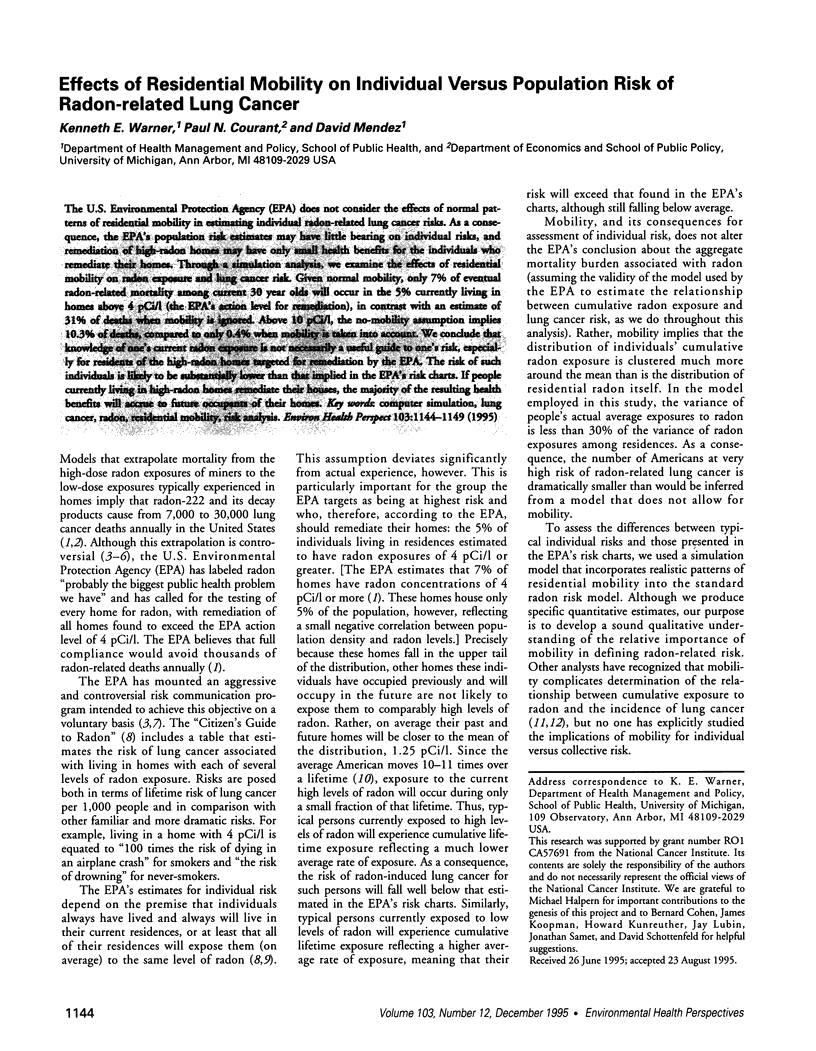
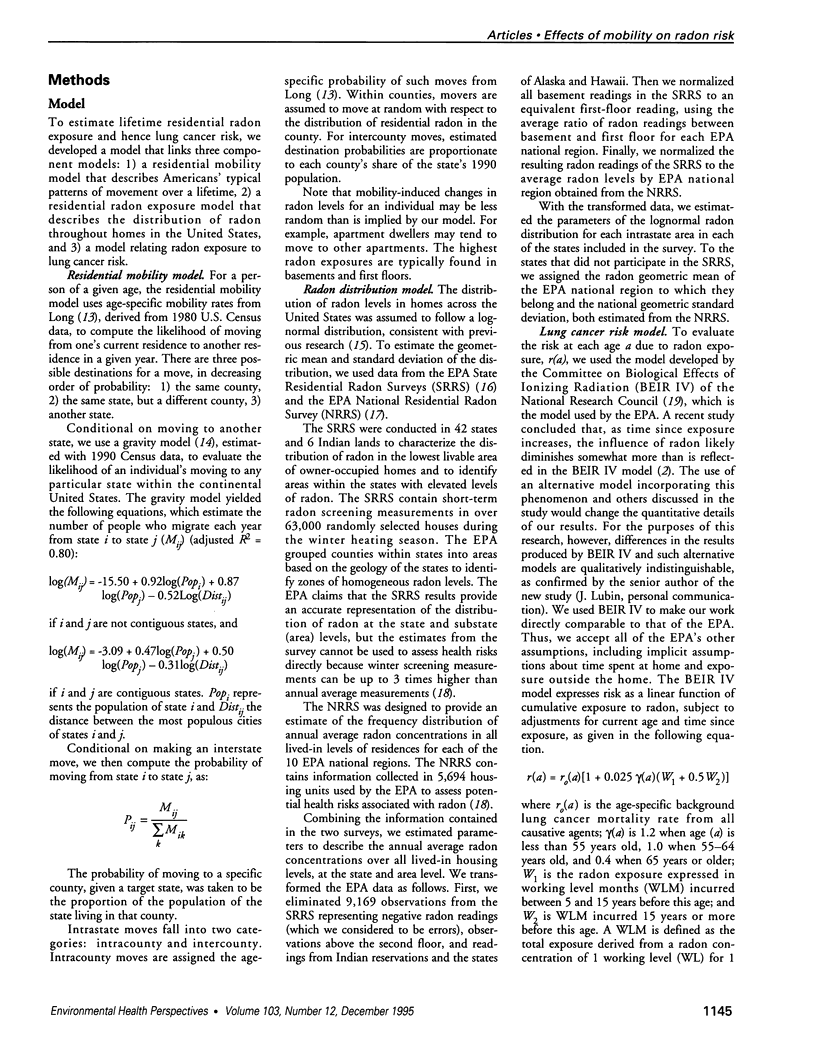
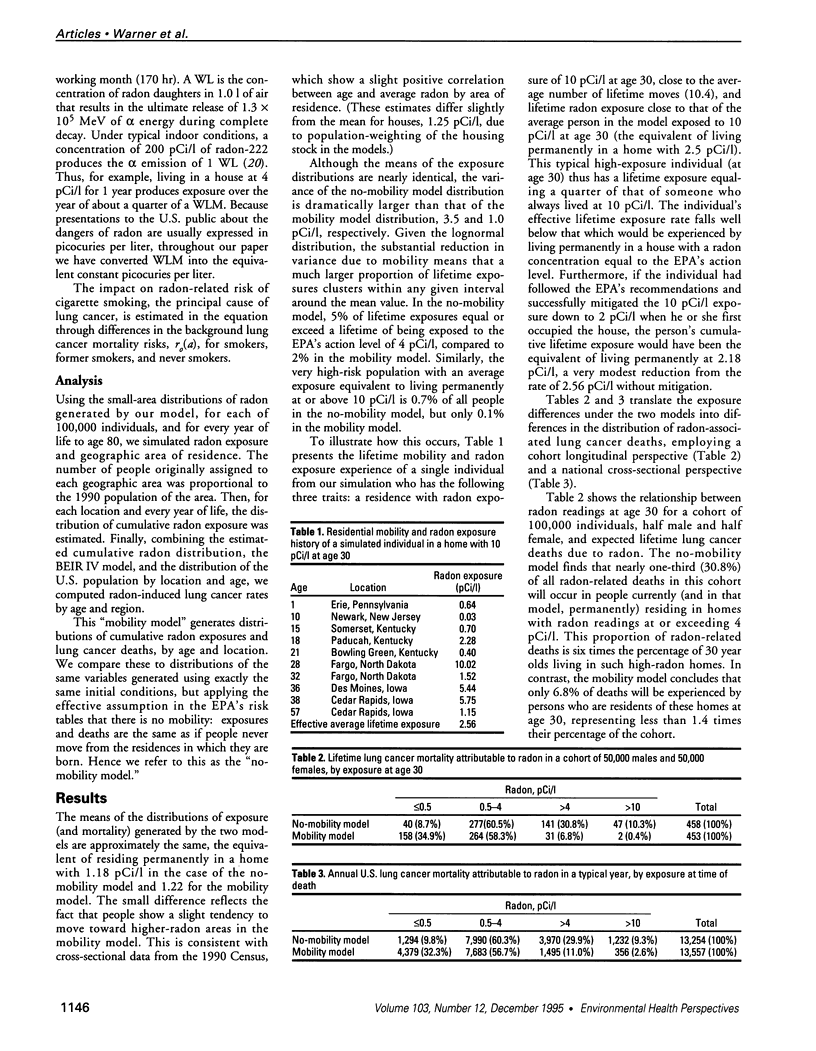
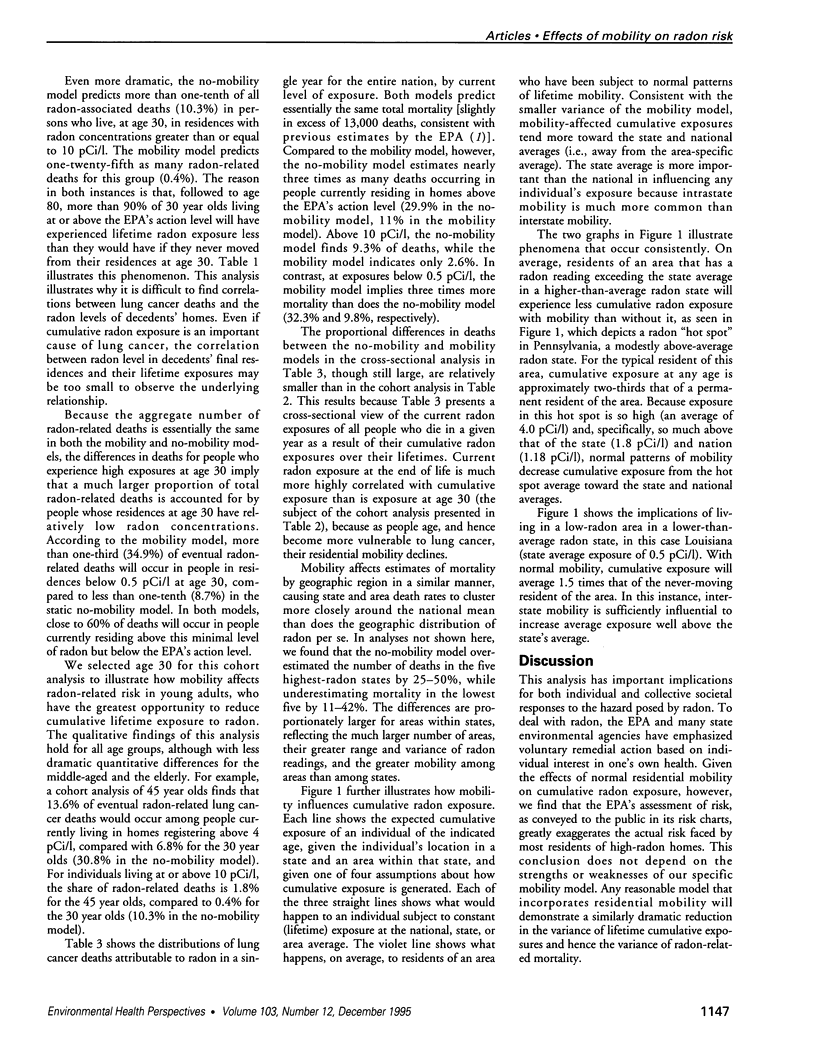
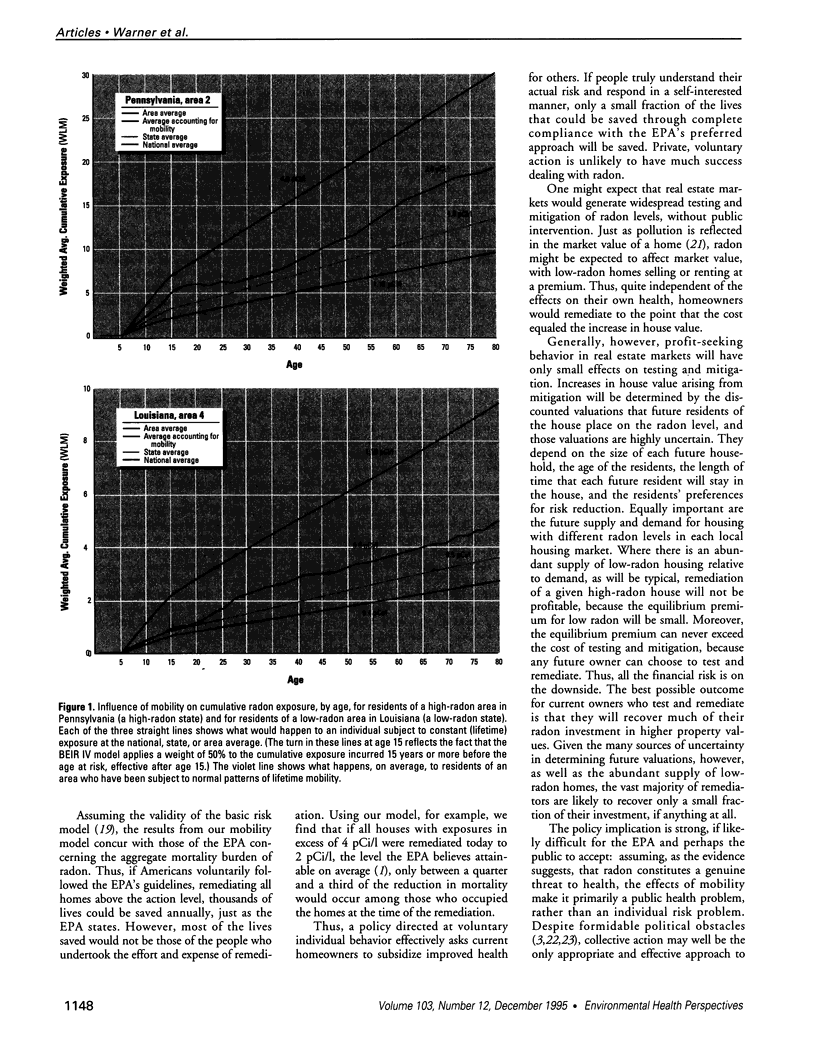
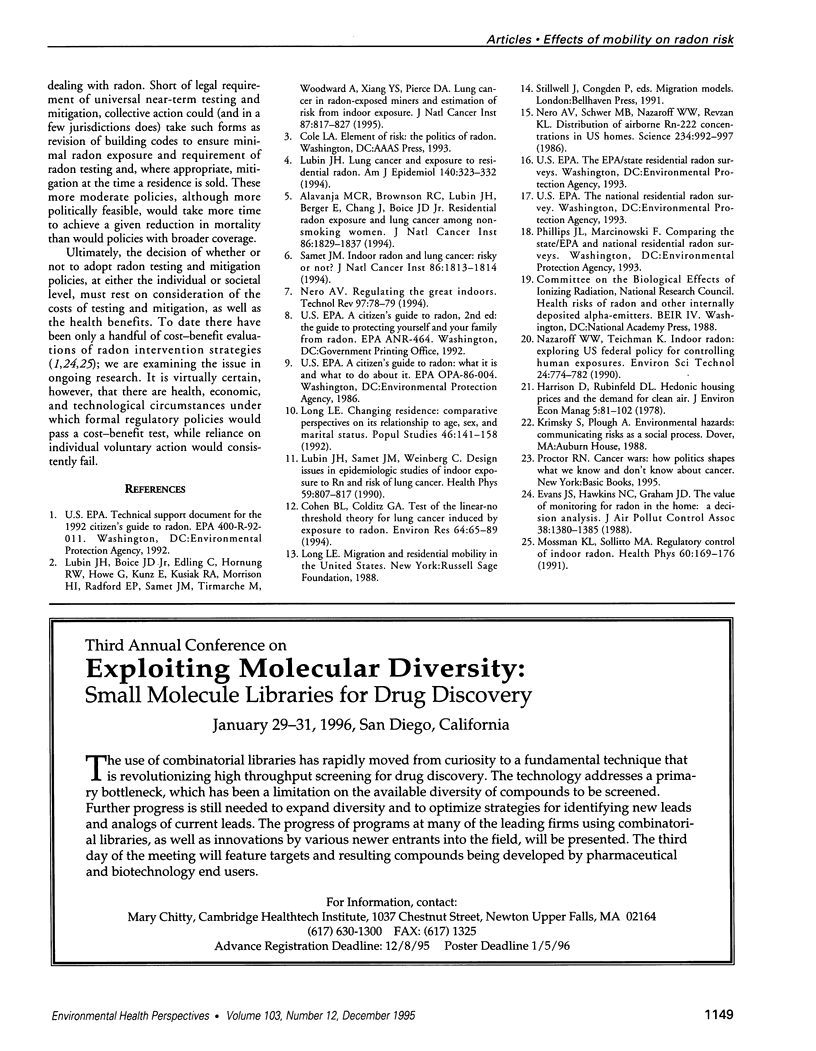
Images in this article
Selected References
These references are in PubMed. This may not be the complete list of references from this article.
- Alavanja M. C., Brownson R. C., Lubin J. H., Berger E., Chang J., Boice J. D., Jr Residential radon exposure and lung cancer among nonsmoking women. J Natl Cancer Inst. 1994 Dec 21;86(24):1829–1837. doi: 10.1093/jnci/86.24.1829. [DOI] [PubMed] [Google Scholar]
- Cohen B. L., Colditz G. A. Tests of the linear-no threshold theory for lung cancer induced by exposure to radon. Environ Res. 1994 Jan;64(1):65–89. doi: 10.1006/enrs.1994.1007. [DOI] [PubMed] [Google Scholar]
- Evans J. S., Hawkins N. C., Graham J. D. The value of monitoring for radon in the home: a decision analysis. JAPCA. 1988 Nov;38(11):1380–1385. doi: 10.1080/08940630.1988.10466477. [DOI] [PubMed] [Google Scholar]
- Lubin J. H., Boice J. D., Jr, Edling C., Hornung R. W., Howe G. R., Kunz E., Kusiak R. A., Morrison H. I., Radford E. P., Samet J. M. Lung cancer in radon-exposed miners and estimation of risk from indoor exposure. J Natl Cancer Inst. 1995 Jun 7;87(11):817–827. doi: 10.1093/jnci/87.11.817. [DOI] [PubMed] [Google Scholar]
- Lubin J. H. Invited commentary: lung cancer and exposure to residential radon. Am J Epidemiol. 1994 Aug 15;140(4):323–332. doi: 10.1093/oxfordjournals.aje.a117254. [DOI] [PubMed] [Google Scholar]
- Lubin J. H., Samet J. M., Weinberg C. Design issues in epidemiologic studies of indoor exposure to Rn and risk of lung cancer. Health Phys. 1990 Dec;59(6):807–817. doi: 10.1097/00004032-199012000-00004. [DOI] [PubMed] [Google Scholar]
- Mossman K. L., Sollitto M. A. Regulatory control of indoor Rn. Health Phys. 1991 Feb;60(2):169–176. doi: 10.1097/00004032-199102000-00004. [DOI] [PubMed] [Google Scholar]
- Nero A. V., Schwehr M. B., Nazaroff W. W., Revzan K. L. Distribution of airborne radon-222 concentrations in U.S. homes. Science. 1986 Nov 21;234(4779):992–997. doi: 10.1126/science.3775373. [DOI] [PubMed] [Google Scholar]
- Samet J. M. Indoor radon and lung cancer: risky or not? J Natl Cancer Inst. 1994 Dec 21;86(24):1813–1814. doi: 10.1093/jnci/86.24.1813. [DOI] [PubMed] [Google Scholar]




